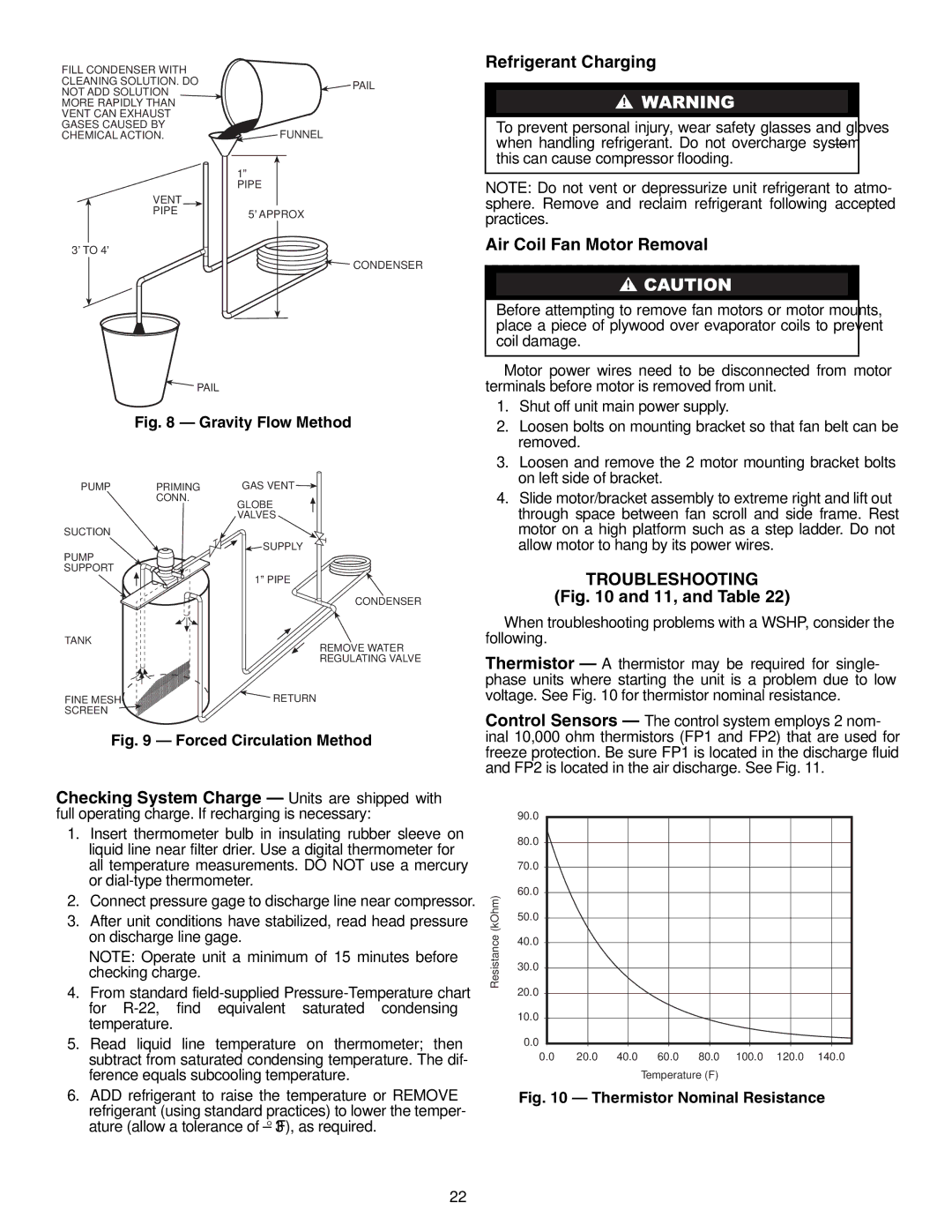50RTG specifications
The Carrier 50RTG represents a significant advancement in the field of rooftop air conditioning systems, combining performance, efficiency, and reliability for commercial applications. Designed to meet the rigorous demands of today’s buildings, the 50RTG series is ideally suited for a variety of environments, including retail, office spaces, and industrial facilities.One of the standout features of the Carrier 50RTG is its energy efficiency. Utilizing the latest in compressor technology, these units achieve high Seasonal Energy Efficiency Ratios (SEER) and Energy Efficiency Ratios (EER), which translates to lower energy costs for users. This efficiency is further enhanced by the incorporation of environmentally friendly refrigerants that comply with current regulations, reducing the overall carbon footprint of the unit.
Another notable characteristic of the 50RTG series is its modular design. The unit can be tailored to specific requirements, making it versatile for different installation scenarios. This modularity not only simplifies maintenance and repair operations but also allows for easy upgrades as technologies evolve or as space demands change.
The advanced control system in the 50RTG is another key technology that sets it apart from competing products. Intuitive user interfaces and smart controls enable precise temperature regulation and improved energy management. These controls often include features such as variable speed fans and integrated economizers, which optimize the system's performance in real-time based on current load requirements.
Durability is also a hallmark of the Carrier 50RTG. Constructed with robust materials and designed to withstand harsh weather conditions, these units provide dependable operation year-round. The corrosion-resistant finish and weather-tight construction ensure that the systems maintain their performance levels and aesthetic appeal over time.
Additionally, the 50RTG series is designed with a focus on low noise operation. With quieter components and advanced noise control technology, these units are ideal for noise-sensitive environments, ensuring that occupants can work, live, or shop in comfort without disruptive background noise.
In summary, the Carrier 50RTG series exemplifies the perfect combination of energy efficiency, advanced technology, customization potential, durability, and low noise operation, making it a top choice for commercial heating and cooling needs. Its innovative features and reliable performance solidify its status as a leader in rooftop HVAC solutions, catering to the evolving requirements of modern buildings.

